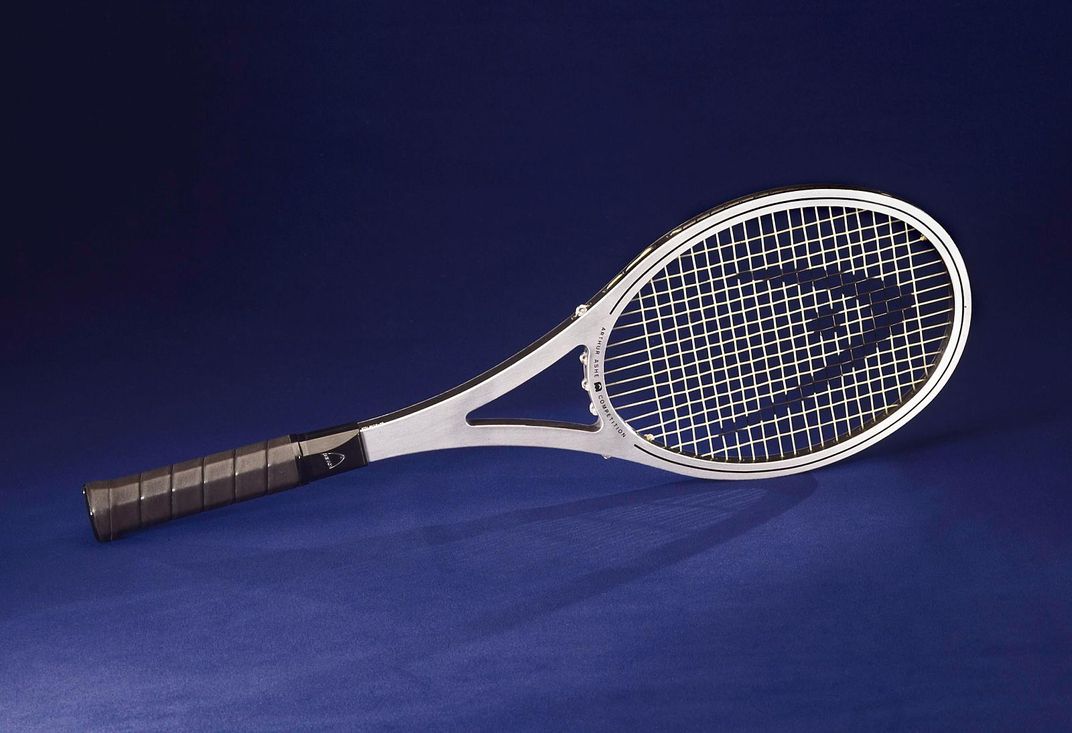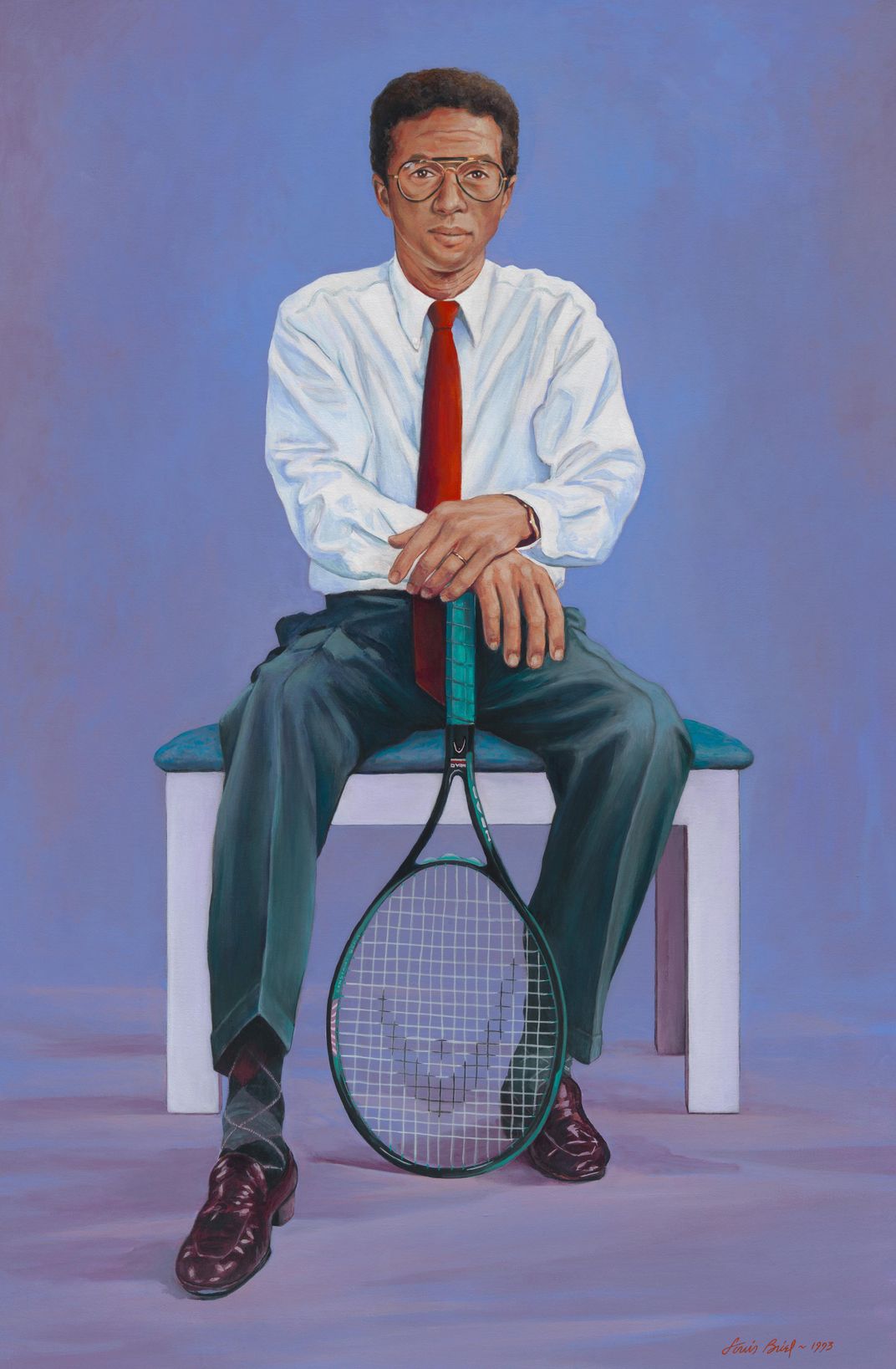How Arthur Ashe Made Tennis History
On July 5, 1975, Arthur Ashe beat heavily-favored Jimmy Connors to become the first African-American man to win Wimbledon
/https://tf-cmsv2-smithsonianmag-media.s3.amazonaws.com/filer/db/87/db87ab5a-22ed-478c-a384-6316d482810e/a3000120c_1.jpg)
When Arthur Ashe competed at Wimbledon on July 5, 1975, he was already accustomed to breaking the color barrier. In 1963, he had become the first African-American to be named to the United States Davis Cup team. Then, in 1968, he became the first African-American to win the U.S. men’s singles championship and the U.S. Open. (The National Portrait Gallery has a photograph of Ashe, taken by Walter Kelleher during the latter, in its collections, above.) And two years later, he was the first black to win the Australian Open.
By 1975, most considered Ashe, who was 31 years old and coming off a few years with no major tennis tournament wins, to be past his prime. So, needless to say, when he advanced to the final round against the defending champion, 22-year-old Jimmy Connors, fans were surprised. Ashe played his cards right, though. He served strongly, but otherwise lobbed nothing but “junk,” as he put it, to his opponent. “He took the pace off the ball and gave the slugger little to bang at, and he served wide to the backhand to pull Connors off balance,” wrote Fred Tupper in the New York Times the next day. “This match brought alive what had been a dull Wimbledon. On the changeovers Ashe sat still, eyes closed, meditating, relaxing for the task ahead.” Ashe won the first two sets handily (6-1 each), lost the third (5-7) and then clinched the win in the fourth (6-4), to become the first African-American man to win Wimbledon, the highest honor in tennis.

“I played well, I was confident,” Ashe told the New York Times. On the other hand, Connors said, “I just didn’t have it today,” and later added, “I couldn’t find an opening. Whether I served wide balls, or kicks he was there. Everything he did was good: fine returns, short and long, and hard serves and volleys.”
In 1991, just two years before the tennis legend died from AIDS, which he contracted through a blood transfusion, Ashe donated a Head tennis racquet to the National Museum of American History. The racquet was purchased in 1975 and was said to have been used in competitions including Wimbledon and the Davis Cup. “It was a great tennis player’s instrument,” says Jane Rogers, associate curator of culture and the arts at the museum. “It was top of the line for the time, but otherwise it was just your ordinary tennis racquet. He was a great tennis player, and he used what he had at the time, and he used it to the best of his ability.”

In addition to Ashe’s racquet, the museum has other tennis memorabilia, including a broken-stringed Wilson racquet used by Chris Evert, who played in the 1970s and ’80s; the dress Billie Jean King wore for her famous 1973 “Battle of the Sexes” match against Bobby Riggs; the tennis whites Althea Gibson wore during the ladies’ singles final at Wimbledon in 1957, when she became the first African-American to win; and a racquet John Isner used in his record-breaking, 11 hour and 5 minute match against Nicolas Mahut in the 2010 Wimbledon.
Arthur Ashe became a leader in the fight against AIDs in 1972 after revealing he had contacted the virus. He died February 6, 1993.
/https://tf-cmsv2-smithsonianmag-media.s3.amazonaws.com/accounts/headshot/megan.png)
/https://tf-cmsv2-smithsonianmag-media.s3.amazonaws.com/accounts/headshot/megan.png)